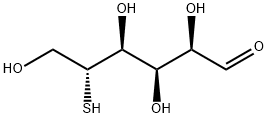Description
5-Thio-D-glucose (20408-97-3) is a potent competitive inhibitor of the cellular transport of glucose and glucose-mediated insulin release.1 May be used to induce a state of glucose deprivation in laboratory animals.2 Stimulates feeding in rat models.3? Induces Alzheimer-like changes in frontal cortex and hippocampus in rats.4? Elevates renal TGF-b1 at a dose that does not prevent streptozotocin diabetes in rats.5
References
Wang et al. (1995) Glucose transporter 2 expression: prevention of streptozotocin-induced reduction in beta-cells with 5-thio-D-glucose; Clin. Endocrinol. Diabetes, 103 83 Suppl.2
Shah et al. (2019), Recurrent glucose deprivation leads to the preferential use of lactate by neurons in the ventromedial hypothalamus; J. Physiol. Endocrinol. Metab., 316 E948
Li et al. (2014), Stimulation of feeding by three different glucose-sensing mechanisms requires hindbrain catecholamine neurons; J. Physiol. Regul. Integr. Comp. Physiol., 306 R257
Salkovic-Petrisic et al. (2006), Alzheimer-like changes in protein kinase B and glycogen synthase kinase-3 in rat frontal cortex and hippocampus after damage to the insulin signaling pathway; J. Neurochem., 96 1005
Lane et al. (2000), 5-thio-D-glucose elevates renal transforming growth factor beta-1 at a dose that does not prevent streptozotocin diabetes in rats; Endocrinology, 141 3337


